This post is by Charlie Espinosa, Pure Earth intern for Latin America.
A 2014 study conducted by Universidad Naciónal de Colombia revealed high lead levels in all students attending La Bonga Elementary School. Located in Malambo, Colombia, the school sits in a community that has been fighting a lead contamination problem for over a decade.
Problems began when a series of lead recycling plants established operations in the area.

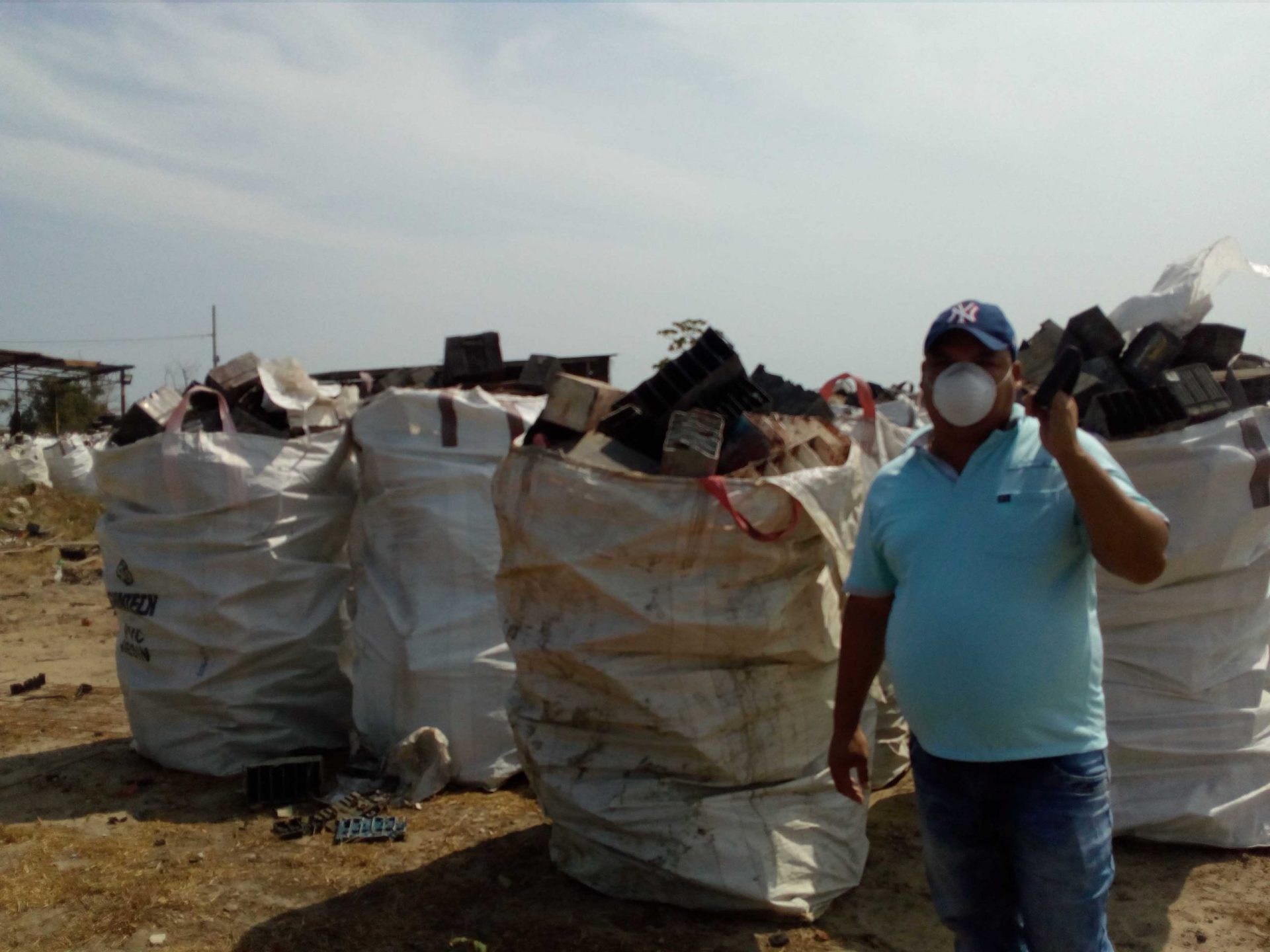
At the site of a former battery recycling operation, the Pure Earth project team saw bags of used lead-acid (car) batteries, which had been recycled for lead. A number of these informal battery recycling operations were found during the visit.Within five years, several members of a family living near one of the smelters died unexpectedly, with lead poisoning as the suspected chief culprit.
Two years later, the story gained international attention because of an award-winning documentary, Plomo: veneno invisible (Lead: the Invisible Poison).
 Discarded battery casings can be seen littered on the ground at one of the sites the team visited.
Discarded battery casings can be seen littered on the ground at one of the sites the team visited.
In March 2017, Pure Earth investigators tested soil samples in the abandoned foundries in Malambo and found high lead concentration in several spots near the plants.
Children are the most vulnerable victims of lead poisoning, which can cause developmental delays, damage to the nervous system and even death.
Something had to be done.
 The Pure Earth team testing the soil near the school.
The Pure Earth team testing the soil near the school.
After identifying Malambo as a priority site, Pure Earth conducted a three-part remediation plan, with the support of the local government of Malambo, USAID, UNIDO and the European Commission.
Phase 1: Education
Fighting A Villain Called “Lead Man”
The first part of the plan was educational. It included the production and distribution of a comic book to teach children how to protect themselves against a villain called “lead man.”
With the help of a youth recreation company, children from the La Bonga School learned about the dangers of lead and how to reduce exposure through puppet shows, songs, and games. Watch the video here or below.
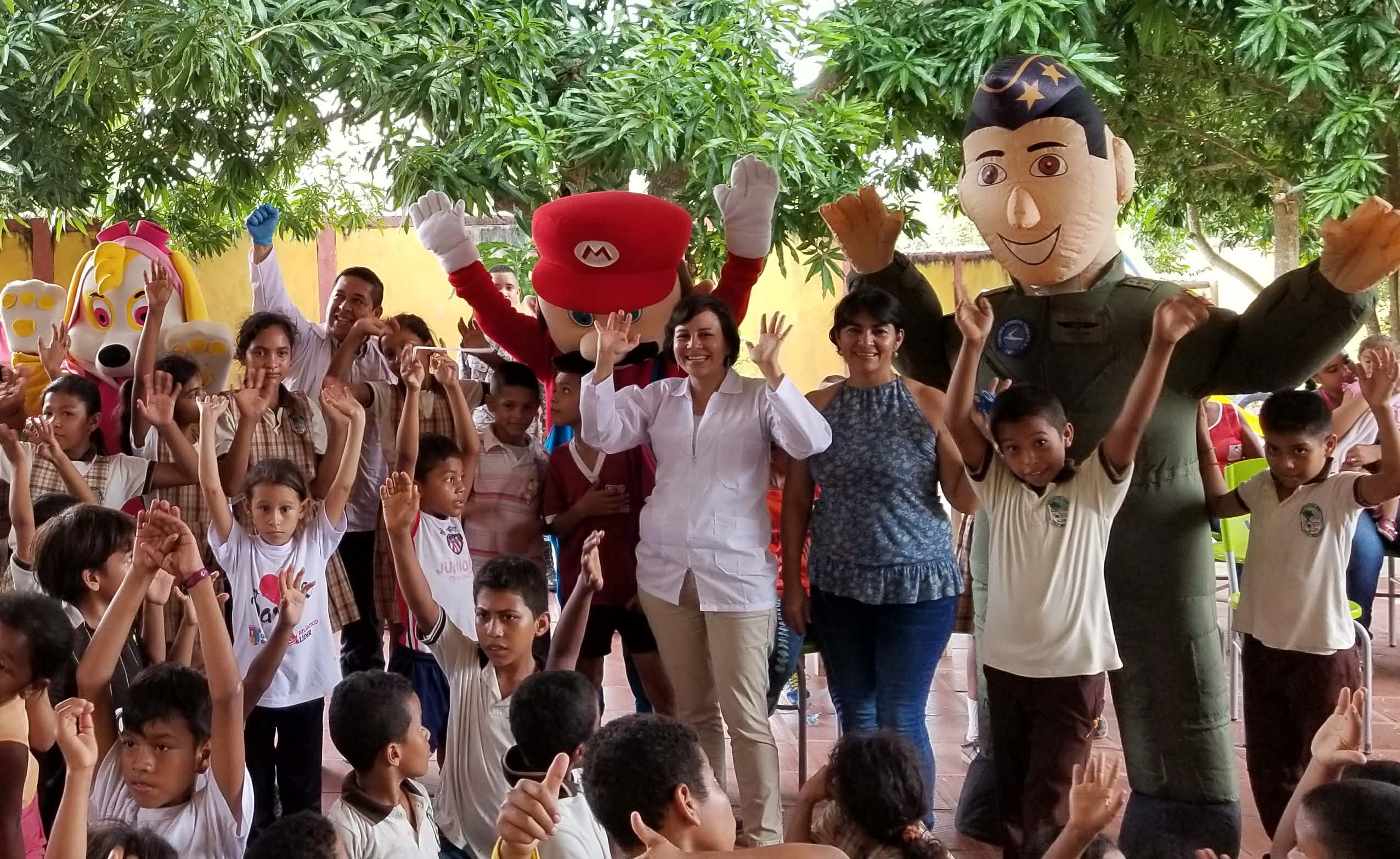
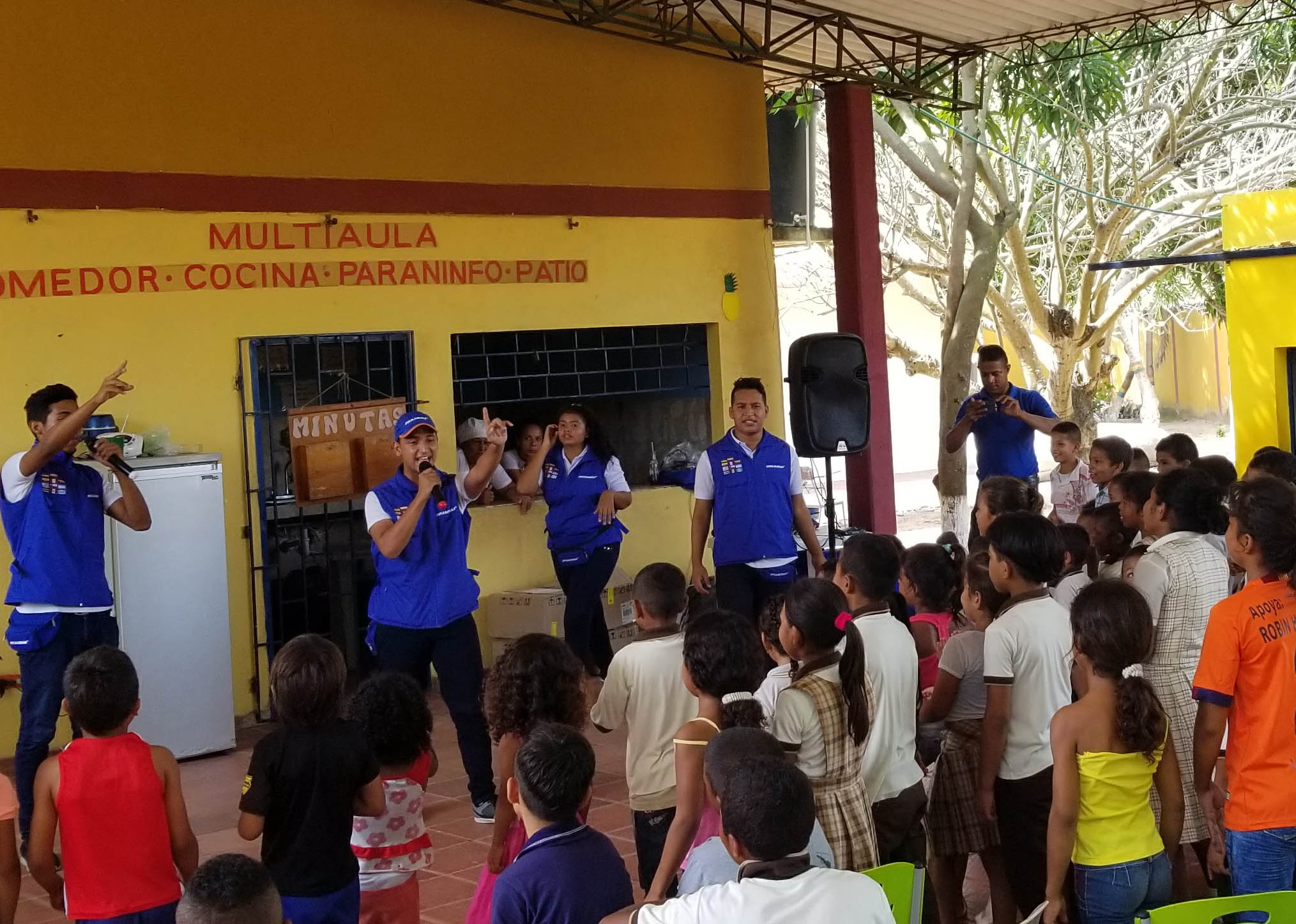
Another education session was aimed at adults.
Pure Earth team met with the community to explain lead poisoning, its long-term effects, especially on children, and how to reduce their exposure.
 Alfonso Rodriguez, director of programs for Pure Earth Colombia, leads an educational session for parents and other community members.
Alfonso Rodriguez, director of programs for Pure Earth Colombia, leads an educational session for parents and other community members.

Phase 2: Monitoring
Two To Three Times Over The Level Of Concern
The second phase of the intervention focused on monitoring
The team measured blood lead levels in 80 adults and 100 children in collaboration with the local Secretary of Health. On average, adults reported levels over twice the official CDC “level of concern” while children reported levels over three times this figure.
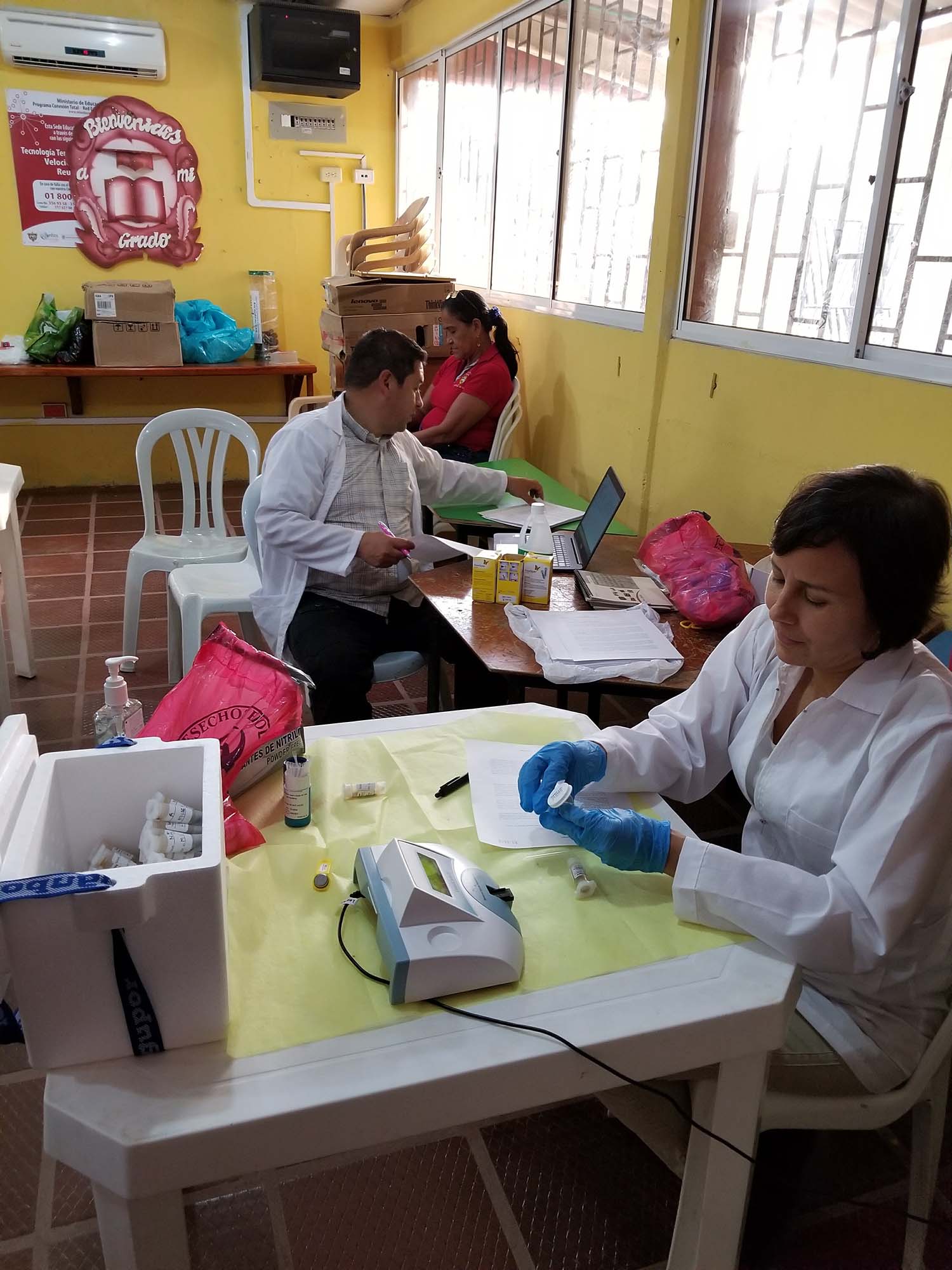
For individuals with elevated levels, the Pure Earth team will be monitoring their home and surroundings to identify the specific source of exposure and to provide further education and awareness.
Phase 3: Remediation
Deactivating A Toxic Bomb
The final part of the intervention was perhaps the most dramatic.
In Vereda del Carmen in Malambo, there is an area that was previously used for battery recycling, which was littered with industrial slag and covered with lead soil levels exceeding 10,000 ppm (the EPA maximum standard level is 400 ppm for residential, and 1,200 for non-play areas).
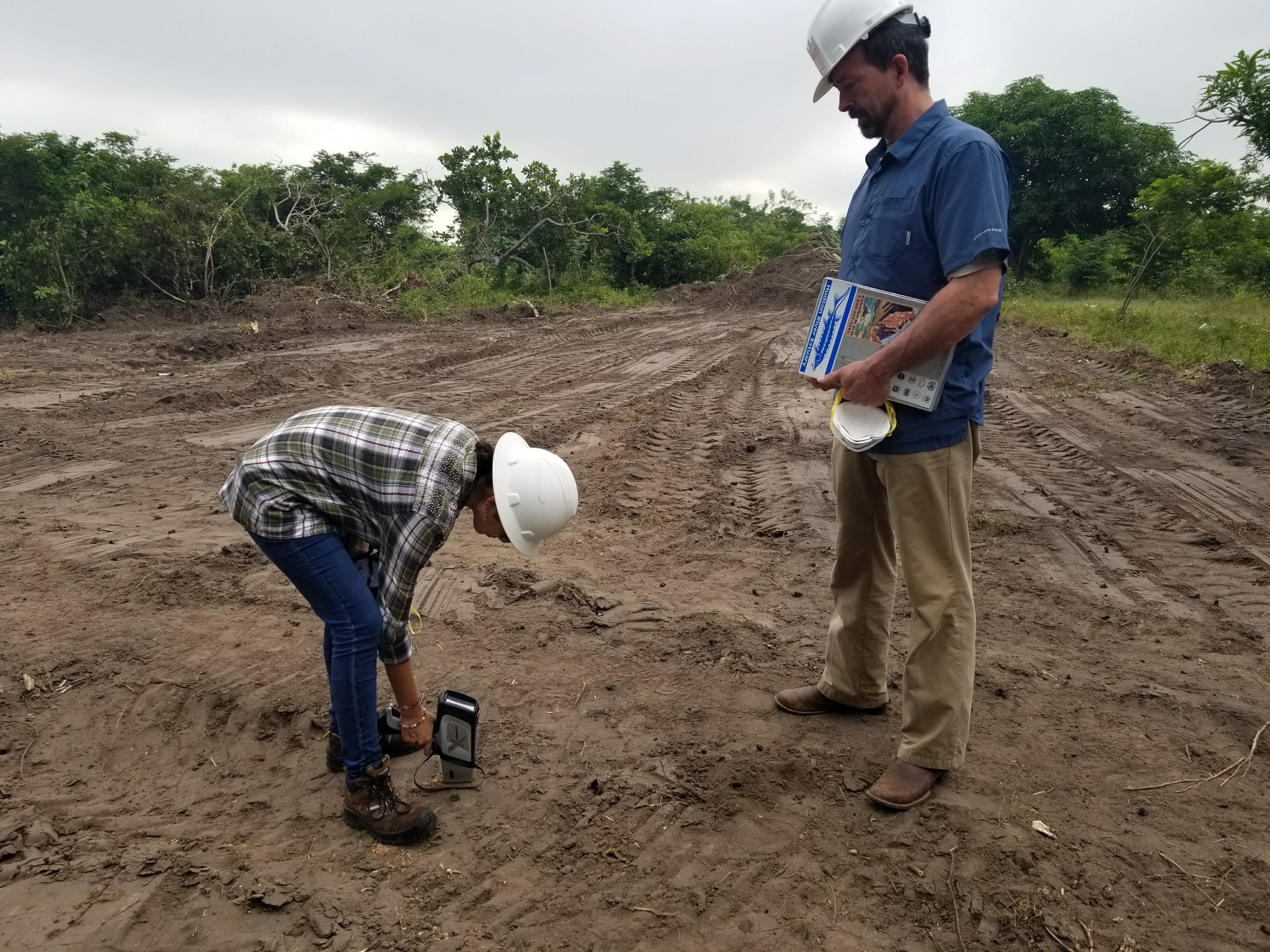 Pure Earth toxic site investigator Natalia Vega uses a handheld XRF (X-ray fluorescence) analyzer that can identify toxic particles in soil in under a minute. Looking on is Joe Hayes, a member of Pure Earth’s technical advisory board.
Pure Earth toxic site investigator Natalia Vega uses a handheld XRF (X-ray fluorescence) analyzer that can identify toxic particles in soil in under a minute. Looking on is Joe Hayes, a member of Pure Earth’s technical advisory board.
While currently uninhabited, the site was described by Pure Earth Technical Advisory Board Member Joe Hayes as a “toxic bomb, waiting in the path of residential development.”
From November to December, a Pure Earth team dug two enormous trenches, which amounted to over 1,600 cubic meters, in order to responsibly encapsulate the contaminated waste. This was done with support from the local authorities, including the Colombian army, which provided some of the necessary machinery.
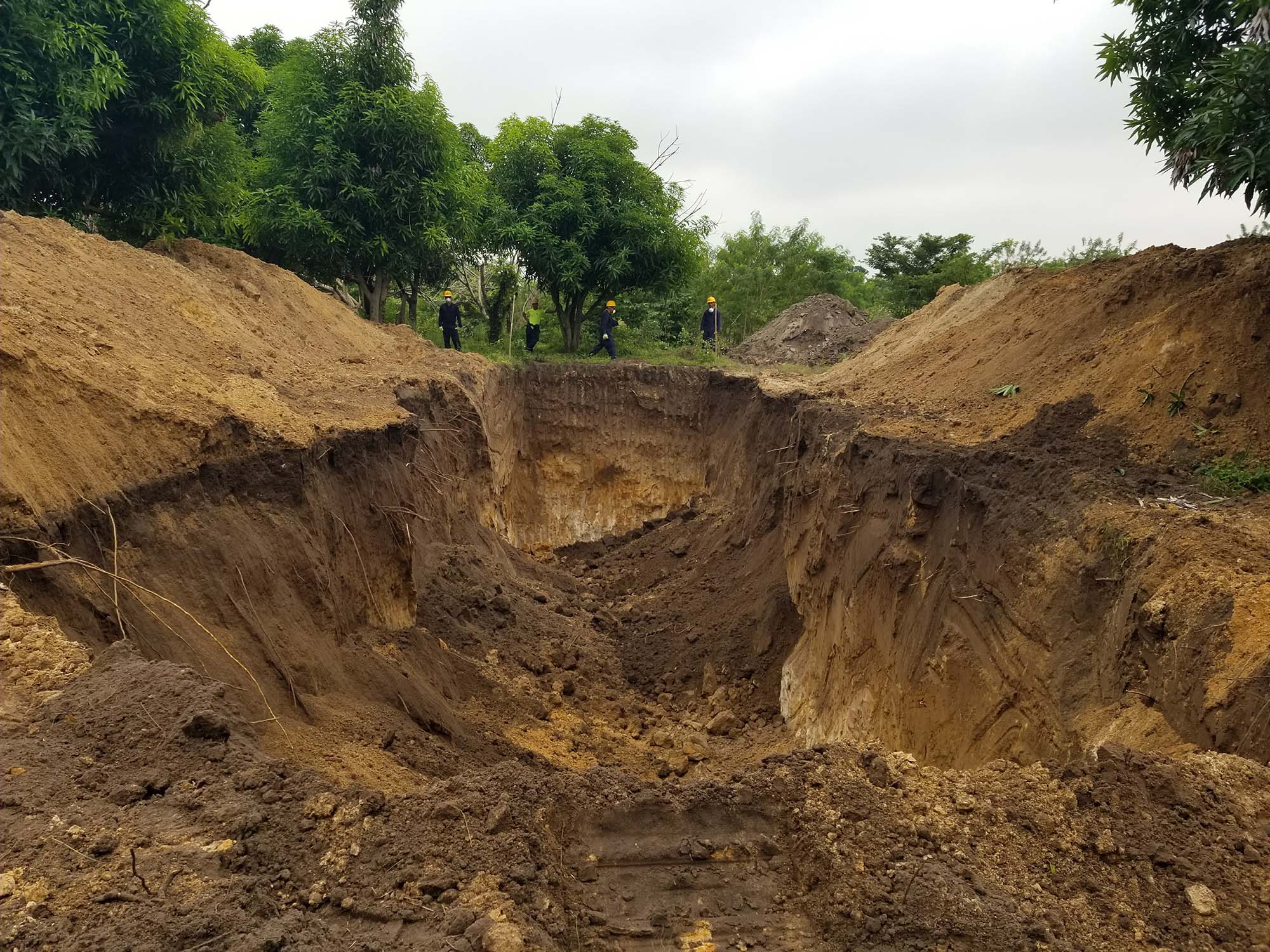


Following the excavation, the trenches were lined with a waterproof geotextile membrane to prevent any contaminant migration to groundwater.
The lead-contaminated waste was then buried and covered with clean soil. Leftover clean soil from the excavation was used to cover other contaminated hotspots found in some residential gardens.
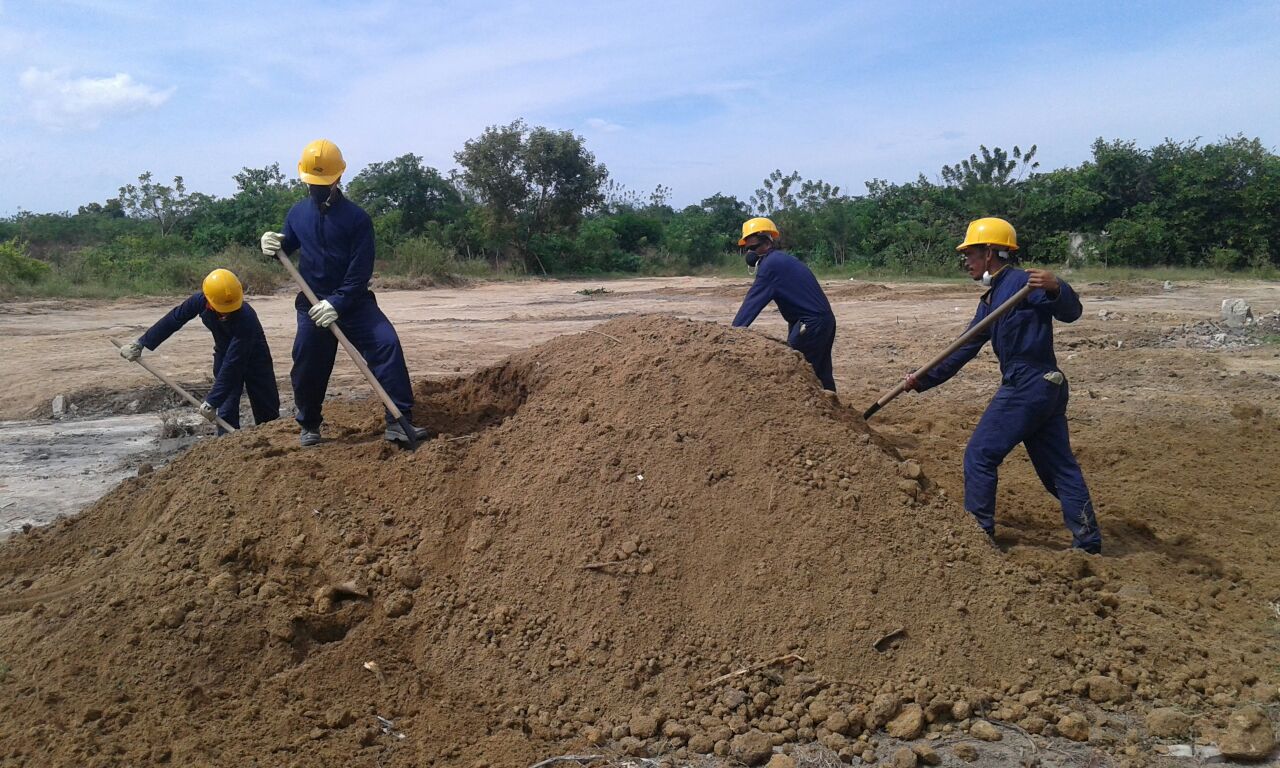
This mitigation effort, combined with direct engagement with the community through education and blood monitoring, may finally start to alleviate the vicious cycle of lead poisoning that has plagued the Malambo community. Follow up blood lead testing will be conducted in a few months.

Spreading The Lesson About Malambo
Fortunately, Pure Earth is not alone in joining Malambo in its struggle against lead contamination.
Pure Earth is partnering with local Colombian nonprofit Casa en el Arbol, founded by Colombian model, actress and philanthropist Taliana Vargas, to bring disadvantaged young journalism students to the Malambo site to explore what is being done there.
The youths will then make a video about the lead contamination and cleanup efforts to share with the community to help spread the word that that pollution is one problem that can be solved.
This collaboration is part of Pure Earth’s continuing work with Vargas, which began earlier this year with the launch of the 2018 Pure Earth responsible jewelry collection, which was auctioned off to raise money and awareness to support our pollution cleanup work around the world.
 Vargas showcasing Colombian designer Pili Restrepo’s earrings, part of the 2018 Pure Earth responsible jewelry collection to beat pollution.
Vargas showcasing Colombian designer Pili Restrepo’s earrings, part of the 2018 Pure Earth responsible jewelry collection to beat pollution.
Pure Earth’s work in Malambo is supported by USAID, UNIDO, and the European Commission. The project is being conducted with the help of the local government in Malambo, including the Planning office, Secretary of Environment, and Secretary of Health, and also the local environmental authority.


Related:
Colombia Lead Poisoning: Helping Children Break Free in Malambo





